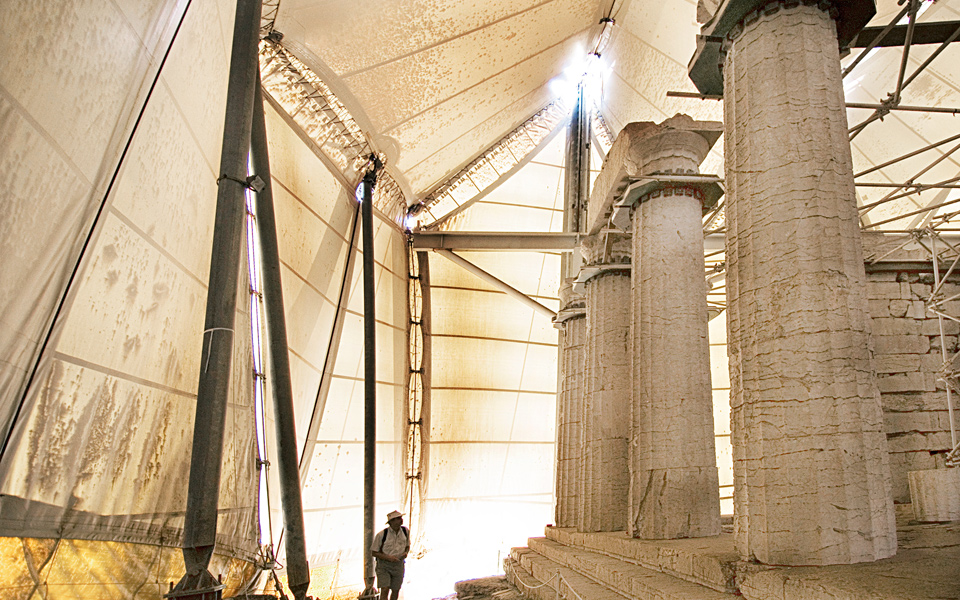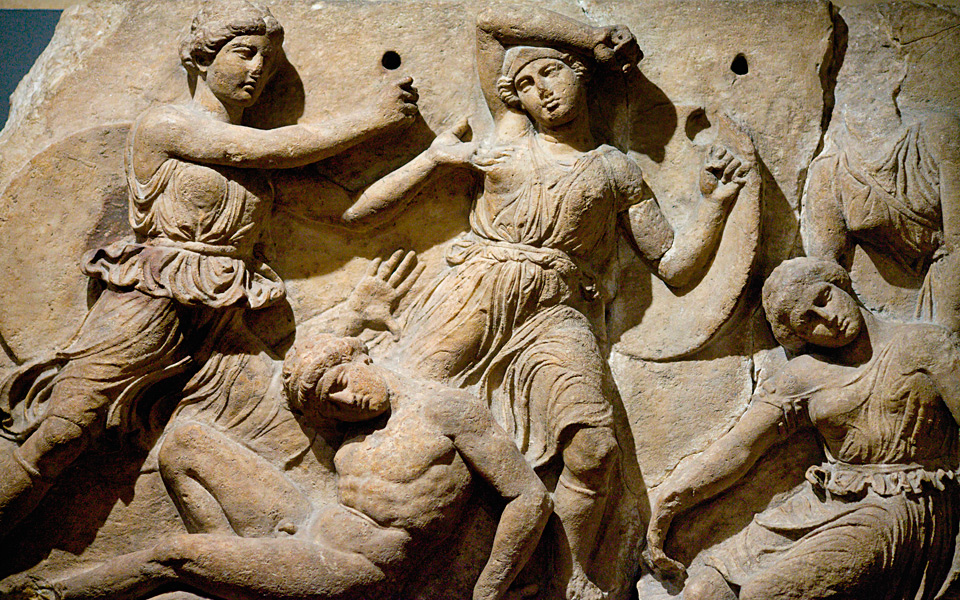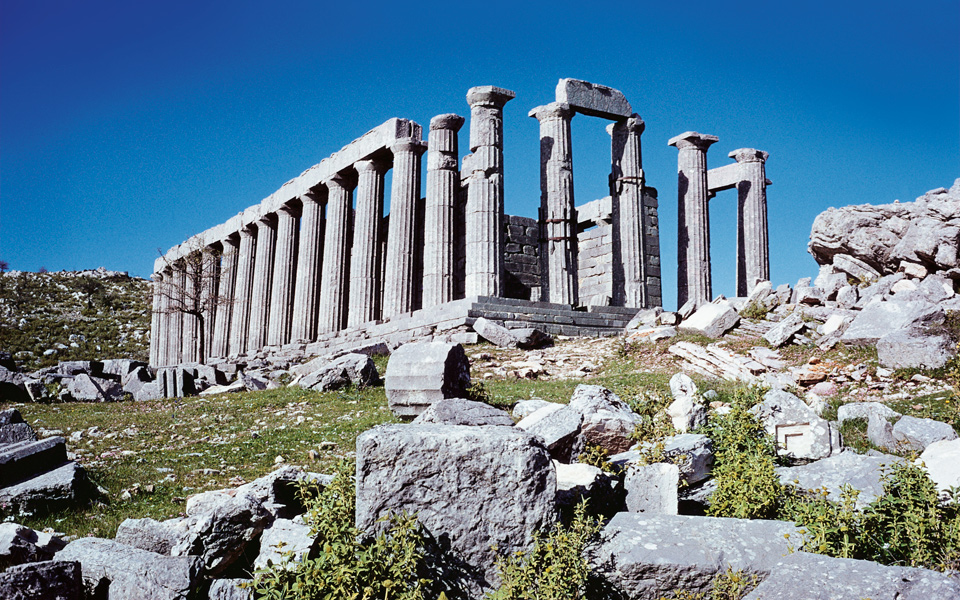Βuilt in the 5th century BC, the temple of Apollo Epicurius at Bassae, southeast of Olympia, represents one of the most innovative temples ever constructed in ancient Greece. The measures taken to protect it in more recent times and today’s on- going restorations, led by Ministry of Culture engineer-architects Constantinos Papadopoulos and Vasiliki Savvatianou, can similarly be noted for their inventive, progressive approaches.
First explored and plundered by English architect-artist Charles Cockerell in 1811-1812, the temple was partly reconstructed in 1902-1908 by the Greek Archaeological Society. It now stands inside an enormous protective tent (erected in 1987) that curiously contrasts with its timeless pastoral setting in picturesque Arcadia.

© Clairy Moustafellou

© Visualhellas.gr
Bassae’s temple was originally designed by Iktinos, one of the Parthenon’s architects, and given unique, near revolutionary features that included a north-south orientation (not east- west); an elongated (6×15), Doric-style, external colonnade; an Ionic colonnade in the cella whose columns were engaged, projecting diagonally from the side walls; and a single Corinthian column – the earliest known of this style – placed at one end of the cella in the spot usually occupied by the cult statue.
Additionally, an elegant sculpted frieze, depicting the Amazonomachy and Centauromachy (now in the British Museum), ran around the upper, interior walls of the cella – not around its exterior, which instead was decorated with a Doric frieze. Only the short sides of this outer frieze featured metopes carved with figural scenes (Apollo’s return to Olympus; the abduction of the Messenian princesses by the Dioscuri), while the long sides were left unadorned. The temple’s triangular pediments similarly were given no sculptural decoration.
“ Long affected by subsidence and weathering, the venerable stones of the Bassae temple are being conserved and restored through state- of-the-art techniques. ”
Long affected by subsidence and se- vere weathering, the venerable stones of the temple at Bassae have since 2001 been undergoing conservation and restoration works that involve state- of-the-art techniques, including the use of improved earthquake-sensitive joinery. Initial disassembly is also revealing previously unseen non-eroded surfaces and new constructional clues that may point to a date earlier than the traditional estimate of 420-400 BC for this non-canonical temple – which Papadopoulos concludes was not only an architectural wonder, but an engineering achievement.











